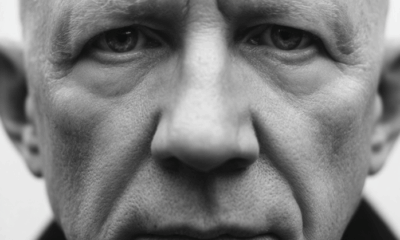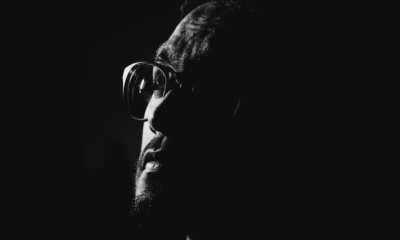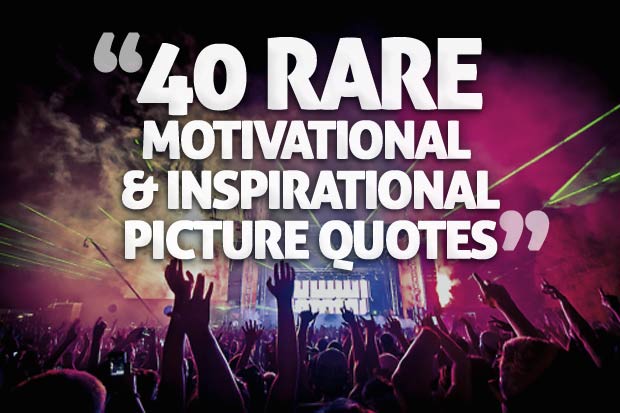Life
Harness the ‘Battery Effect’ to Transform Life’s Tensions into Your Greatest Strength
Recharge your life batteries by shifting your mindset today

I believe our life capacity is determined by the skillsets we develop on this spinning rock we call Earth. By “life capacity,” I mean our ability to embrace and sustain joy.
But hold on—doesn’t that sound a bit hedonistic? Let me explain.
As someone who has traveled across continents, interacted with diverse cultures, and floated through countless experiences, I’ve been haunted by one persistent question:
What determines the capacity for joy in life?
This is no easy puzzle, but I’ve mustered the courage to chase an answer—or at least offer a new perspective to those of you with endlessly curious minds.
So, let me ask you: Do you want to know the secret behind the most peaceful and joyful people on this planet?
If your answer is yes, let’s begin.
The “If” Trap
Pause for a moment and think: How often do your thoughts start with “if”?
- If I had a fit body, I’d deserve attention.
- If I had more money, I’d deserve respect.
This kind of thinking traps us in a cycle where happiness is always just out of reach, tied to some future achievement or external factor. It’s like chasing a horizon that moves away as we step closer.
Now, consider the power of sentences that start with “despite.”
- Despite my toxic environment, I’m excited to create a new reality.
- Despite my finances, I’m grateful for the possibilities ahead.
Do you feel the shift? One mindset limits us; the other empowers us. One keeps us stuck; the other sparks resilience.
After years of living in the “if” spectrum and observing people thriving in the “despite” spectrum, I’ve realized that no matter the odds, we always have a choice.
The choice to live a happy life is ours to make, and unapologetically embracing that choice is a skill—a “battery”—that we can strengthen.
Cultural Batteries: East vs. West
Our ability to cultivate these batteries is often influenced by cultural frameworks. Let’s explore how different cultures shape our capacity for joy.
Western cultures often celebrate directness and emotional expression. Feeling happy? Shout it from the rooftops. This value system tends to emphasize individual autonomy and heightened emotions. But on the flip side, it can sometimes veer toward a pursuit of happiness that feels performative or superficial, tied to material success and external validation.
Eastern cultures, in contrast, often prioritize collective harmony and emotional restraint. In many Eastern traditions, openly expressing happiness or focusing too much on personal joy may be seen as undignified or even selfish. Instead, the emphasis is on balance, humility, and consideration for the group.
Having been deeply exposed to both perspectives, I’ve wrestled with these dualities.
For years, I felt guilt for my loud, expressive lifestyle, as if my joy needed to be toned down to align with collective values. Yet, I’ve also seen the beauty of moral discernment—the way it fosters deep empathy and strengthens communal bonds through intentional choices and mindful actions.
Neither approach is inherently right or wrong. Instead, the sweet spot lies in integrating the strengths of both. The battery of sustainable happiness requires both the Western drive for self-expression and the Eastern wisdom of balance.
The Unity of Contradictions
Life, as I see it, is a dance of contradictions.
Joy exists alongside sorrow.
Light exists alongside darkness.
To sustain happiness, we must embrace this duality.
Imagine trying to sustain joy without ever experiencing hardship. Without contrast, joy would lose its meaning. Similarly, attempting to avoid negative emotions entirely puts us on an exhausting pedestal of perfection.
Life is not about eliminating contradictions but about uniting them.
Take a moment to reflect on your own batteries. Are you charging only one side of your life while neglecting the other?
- Are you pursuing success while ignoring your emotional well-being?
- Are you focusing so much on inner peace that you’re avoiding external challenges?
To build sustainable batteries, we must learn to carry both the positive and negative sides of life. It’s about finding balance—the kind that allows us to fully engage with life’s richness without being overwhelmed by its complexities.
Practical Steps to Recharge Your Batteries
So, how do we cultivate this balance? How do we strengthen the batteries of our lives?
Shift from “If” to “Despite”
Start catching yourself whenever your thoughts begin with “if.” Replace these conditional statements with “despite.”
For example:
- Instead of If I had more confidence, I’d pursue my passion, try Despite my fear, I’m taking a step toward my passion.
Practice Gratitude
Gratitude is one of the most powerful ways to recharge your batteries.
- Each day, list three things you’re thankful for, no matter how small.
- This trains your mind to focus on abundance rather than lack.
Balance Expression and Restraint
- If you’re naturally expressive, try incorporating moments of quiet reflection.
- If you lean toward restraint, practice sharing your feelings more openly.
Both are essential skills for navigating life’s ups and downs.
Accept Contradictions
Life is messy and unpredictable. Instead of resisting this, embrace it.
- Allow yourself to feel both joy and sorrow, success and failure.
- This acceptance will make you more resilient.
Invest in Meaningful Relationships
Joy shared is joy multiplied.
Surround yourself with people who uplift and challenge you, and make a conscious effort to nurture these connections.
Living with Full Batteries
In this ever-moving blue rock of ours, life is a blend of opposites.
- Happiness and hardship.
- Autonomy and community.
- Expression and moral discernment.
The most intelligent way forward is to embrace the unity of these contradictions, using them to charge the batteries of our lives.
Just like batteries require both a positive and a negative charge to function, our lives are shaped by both highs and lows.
Learning to navigate these fluctuations with awareness and intention transforms obstacles into stepping stones.
When we learn to carry both sides of life’s dualities, we unlock a sustainable joy that isn’t tied to fleeting circumstances. Instead, it becomes a steady force, empowering us to live authentically and unapologetically.
So, my final question to you is this:
Are your batteries fully charged?
If not, what’s stopping you from plugging in?
Life
10 Research-Backed Steps to Create Real Change This New Year
This New Year could finally be the one where you break old patterns and create real, lasting change.

Every New Year, we make plans and set goals, but often repeat old patterns. (more…)
Life
9 Harsh Truths Every Young Man Must Face to Succeed in the Modern World
Before chasing success, every young man needs to face these 9 brutal realities shaping masculinity in the modern world.

Many young men today quietly battle depression, loneliness, and a sense of confusion about who they’re meant to be.
Some blame the lack of deep friendships or romantic relationships. Others feel lost in a digital world that often labels traditional masculinity as “toxic.”
But the truth is this: becoming a man in the modern age takes more than just surviving. It takes resilience, direction, and a willingness to grow even when no one’s watching.
Success doesn’t arrive by accident or luck. It’s built on discipline, sacrifice, and consistency.
Here are 9 harsh truths every young man should know if he wants to thrive, not just survive, in the digital age.
1. Never Use Your Illness as an Excuse
As Dr. Jordan B. Peterson often says, successful people don’t complain; they act.
Your illness, hardship, or struggle shouldn’t define your limits; it should define your motivation. Rest when you must, but always get back up and keep building your dreams. Motivation doesn’t appear magically. It comes after you take action.
Here are five key lessons I’ve learned from Dr. Peterson:
-
Learn to write clearly; clarity of thought makes you dangerous.
-
Read quality literature in your free time.
-
Nurture a strong relationship with your family.
-
Share your ideas publicly; your voice matters.
-
Become a “monster”, powerful, but disciplined enough to control it.
The best leaders and thinkers are grounded. They welcome criticism, adapt quickly, and keep moving forward no matter what.
2. You Can’t Please Everyone And That’s Okay
You don’t need a crowd of people to feel fulfilled. You need a few friends who genuinely accept you for who you are.
If your circle doesn’t bring out your best, it’s okay to walk away. Solitude can be a powerful teacher. It gives you space to understand what you truly want from life. Remember, successful men aren’t people-pleasers; they’re purpose-driven.
3. You Can Control the Process, Not the Outcome
Especially in creative work, writing, business, or content creation, you control effort, not results.
You might publish two articles a day, but you can’t dictate which one will go viral. Focus on mastery, not metrics. Many great writers toiled for years in obscurity before anyone noticed them. Rejection, criticism, and indifference are all part of the path.
The best creators focus on storytelling, not applause.
4. Rejection Is Never Personal
Rejection doesn’t mean you’re unworthy. It simply means your offer, idea, or timing didn’t align.
Every successful person has faced rejection repeatedly. What separates them is persistence and perspective. They see rejection as feedback, not failure. The faster you learn that truth, the faster you’ll grow.
5. Women Value Comfort and Security
Understanding women requires maturity and empathy.
Through books, lectures, and personal growth, I’ve learned that most women desire a man who is grounded, intelligent, confident, emotionally stable, and consistent. Some want humor, others intellect, but nearly all want to feel safe and supported.
Instead of chasing attention, work on self-improvement. Build competence and confidence, and the rest will follow naturally.
6. There’s No Such Thing as Failure, Only Lessons
A powerful lesson from Neuro-Linguistic Programming: failure only exists when you stop trying.
Every mistake brings data. Every setback builds wisdom. The most successful men aren’t fearless. They’ve simply learned to act despite fear.
Be proud of your scars. They’re proof you were brave enough to try.
7. Public Speaking Is an Art Form
Public speaking is one of the most valuable and underrated skills a man can master.
It’s not about perfection; it’s about connection. The best speakers tell stories, inspire confidence, and make people feel seen. They research deeply, speak honestly, and practice relentlessly.
If you can speak well, you can lead, sell, teach, and inspire. Start small, practice at work, in class, or even in front of a mirror, and watch your confidence skyrocket.
8. Teaching Is Leadership in Disguise
Great teachers are not just knowledgeable. They’re brave, compassionate, and disciplined.
Teaching forces you to articulate what you know, and in doing so, you master it at a deeper level. Whether you’re mentoring a peer, leading a team, or sharing insights online, teaching refines your purpose.
Lifelong learners become lifelong leaders.
9. Study Human Nature to Achieve Your Dreams
One of the toughest lessons to accept: most people are self-interested.
That’s not cynicism, it’s human nature. Understanding this helps you navigate relationships, business, and communication more effectively.
Everyone has a darker side, but successful people learn to channel theirs productively into discipline, creativity, and drive.
Psychology isn’t just theory; it’s a toolkit. Learn how people think, act, and decide, and you’ll know how to lead them, influence them, and even understand yourself better.
Final Thoughts
The digital age offers endless opportunities, but only to those who are willing to take responsibility, confront discomfort, and keep improving.
Becoming a man today means embracing the hard truths most avoid.
Because at the end of the day, success isn’t about luck. It’s about who you become when life tests you the most.
Change Your Mindset
The Four Types of Happiness: Which One Are You Living In?
Most people chase success only to find emptiness, this model reveals why true happiness lies somewhere else.

In a world driven by rapid technological growth and constant competition, many people unknowingly trade joy for achievement. (more…)
Change Your Mindset
The Secret Daily Routines Behind History’s Most Brilliant Thinkers
Uncover the daily rituals and hidden habits that powered history’s most brilliant minds to success.

Why Daily Rituals Matter
Every great achiever has one thing in common: discipline. Behind the novels, inventions, discoveries, and masterpieces are small, consistent habits repeated daily. (more…)
-

 Personal Development4 weeks ago
Personal Development4 weeks agoThis Silent Habit Might Be Sabotaging Your Career
-

 Business4 weeks ago
Business4 weeks agoWhy Your E-Commerce Fulfilment Is Probably Broken (And How to Fix It)
-

 Shift Your Mindset3 weeks ago
Shift Your Mindset3 weeks ago11 E’s That Define Every Great Leader And Why Most People Miss Them
-

 Did You Know3 weeks ago
Did You Know3 weeks agoThe Success Patterns You Inherited (And Didn’t Notice)
-

 Business3 weeks ago
Business3 weeks agoThe Hidden Money Pit in Your Operations (and How to Use It)
-

 Entrepreneurs2 weeks ago
Entrepreneurs2 weeks agoThe Essential Skills Every Entrepreneur Needs In 2026
-

 Change Your Mindset2 weeks ago
Change Your Mindset2 weeks agoHow to Turn Your Mind Into Your Greatest Asset (Instead of Your Enemy)
-

 Change Your Mindset1 week ago
Change Your Mindset1 week agoThe Silent Skill That Makes People Respect You Instantly


























